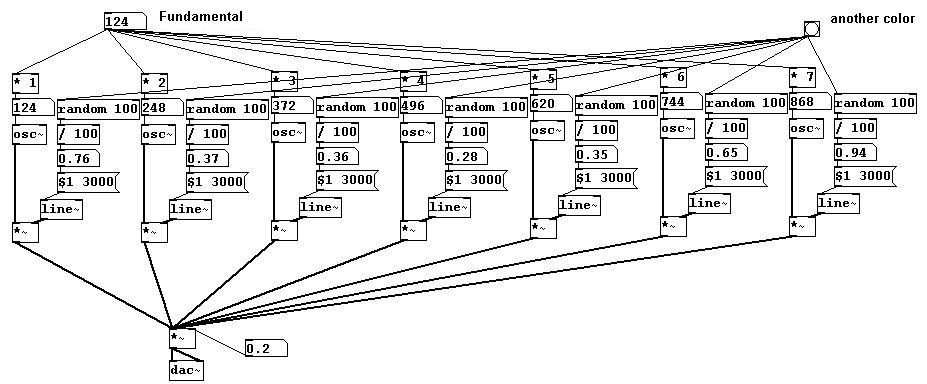Additive Synthesis &
Function-based Spectromorphologies
Concert acousmatic music has the powerful ability to conjure abnormal forms, vectors, and trajectories. Developing a graphical lexicon for expressing these types of spectral gestures has always been an interest of mine that I haven’t ever formalized. In Lasse Thoresen’s essay ‘Spectromorphological Analysis of Sound Objects’ he devises the notion of Temporal Semiotic Units (TSU) that is very attractive to me and partially inspired this étude. These units are effectively visual equivalents of vocabulary taken from structural functions to inform the shaping and manipulation of sounds and meta-data within a sound. These spectromorphological words and gestures are realized both aurally and graphically as singular or composite events. In this exercise I will be using additive synthesis as a timbral palette.
The first étude examines stacked paraboloid modulations of internal temporality and the inharmonic series. The second étude examines functional modulation in spatial matrices with fixed musical events embedded in the matrices.
Inharmonic Partials & Hyperbolic Paraboloids

The intersecting hyperparaboloids of Felix Candela’s building (pictured above) at Xochimilco, Mexico City mesmerized me when I was visiting last year for the Day of the Dead. I kept hearing spectral motion like this étude when I was there. The diagram above illustrates the parabolic formations shape of the ‘hypars.’ The ‘hypar’ structure means the seemingly complex curves can all be constructed using straight lines, as the diagram above to demonstrates. I used parabolic modulations of the inharmonic series to shape the timbres in this piece. Naturally, this scoring technique owes a great deal to Xenakis’ Philips Pavilion, polytopes, and Metastaseis.
‘Music is liquid architecture; architecture is frozen music’
‘Music is liquid architecture; architecture is frozen music’
- GOETHE
Spectral Function Drawings


Pierre Schaeffer’s phenomenological approach to composition led him to articulate a theory both of listening practices and of sound objects. Schaeffer considered the ‘typo-morphologie’ as a multifaceted tool for the description of all the objects of the audible domain. The table depicted below is derived from his tableau. According to Schaeffer a typological space should meet three criteria. In spectral macroform, it is possible to define three situations:
eumorphism: relevance of all the three categories (inchoativity, durativity, terminativity). The sound object has a well-defined temporal shape;
amorphism: durativity dominates, inchoativity and terminativity are made irrelevant. Amorphous sounds are sounds that last indefinitely;
anamorphism: profile is compressed, inchoativity and terminativity coincide, durativity is irrelevant, rather the process can be described in terms of punctuality. It is the case of sound objects as pure events.
I used Schaeffer’s tableau as a map for sound qualities in the two recordings above. I interpolated between values in the matrix to construct the spectromorphological shapes. The drawings pictured above are Zsuzsa Peter’s C24 and were the visual scores for each etude, respectively.

Lombardo-Valle's 3-dimensional sound criteria typology inspired by Schaeffer
Resources:
One of the pioneering pieces for additive synthesis is ‘Studie II’ by Karlheinz Stockhausen, written in 1954. This piece used only sine tones and mixtures thereof in non-tempered intervals and was an impetus for the following voice building. This image is a graphic of one voice used in the second etude.

Denis Smalley’s Spectromorphology [1997]
Department of Music, City University, Northampton Square, London EC1V 0HB, UK